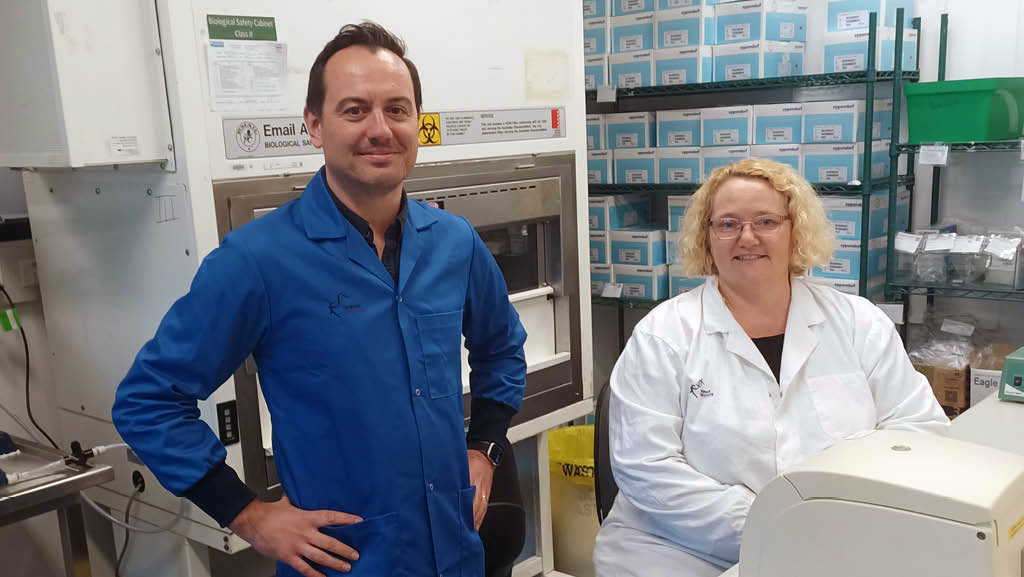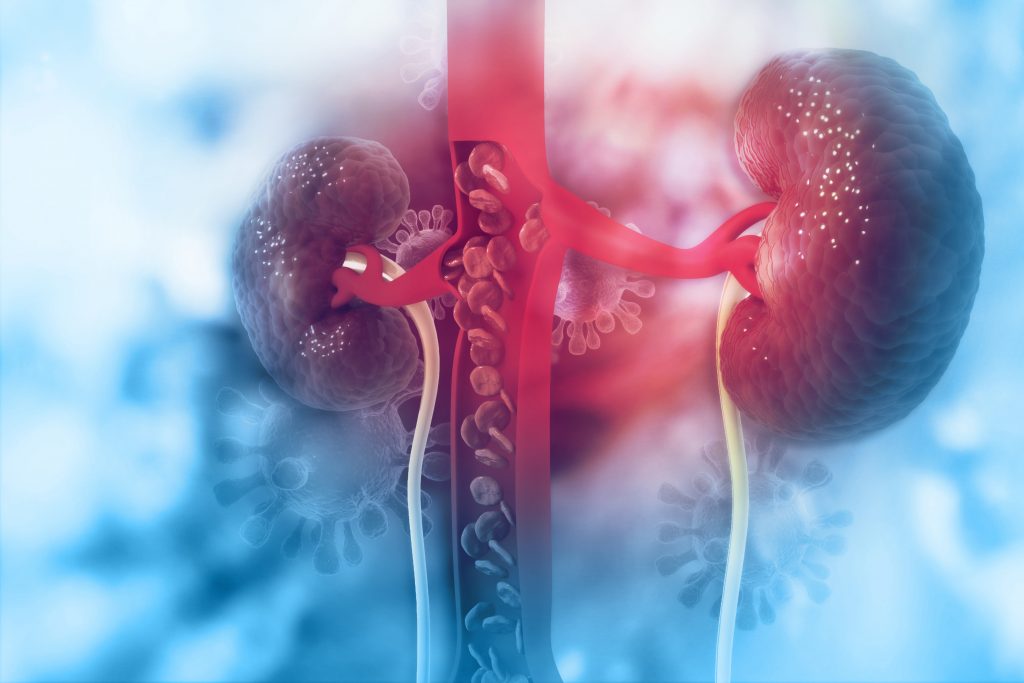Commercialising a novel kidney diagnostic tool
Detecting kidney disease and injury earlier than current methods, is a personal mission for Dr Nicky Boulter, a former academic who has crossed over into industry to bring life-saving diagnostic tools to market.
When Dr Nicky Boulter’s father underwent successful heart bypass surgery back in 2011, her entire family breathed a huge sigh of relief. “Sadly, only days later, we were devastated when he developed a life-threatening acute kidney injury and passed away as a result,” explains the former academic, who is now the Head of the R&D Sequencing Platform at the Garvan Institute of Medical Research.
“A significant number of people develop an acute kidney injury after cardio thoracic surgery, or any surgery for that matter, but it’s often not identified quickly enough to provide life-saving treatment,” Boulter explains.
Spurred on by her tragic personal experience, Boulter and co-inventor, David Murray, are now working to commercialise a more targeted diagnostic tool that could potentially have saved her father’s life. The test development came out of research the pair are doing at the Garvan Institute of Medical Research. Commercialisation of the test has also been supported through the free NSW Health Commercialisation Training Program.
Detecting Kidney Issues Earlier
Kidney disease is predicted to become the 5th leading cause of death globally by 2040, yet it is highly underdiagnosed, due to lack of effective diagnostic tools. Current kidney diagnostic tests detect levels of a protein called creatinine, which builds up when the kidneys are not efficiently filtering blood. “Unfortunately, by the time significant creatinine levels are detectable, people may have lost as much as 50% of their kidney function and by the time clinical symptoms manifest, 90% of kidney function may be lost,” Boulter points out.
As well as identifying red flags that might indicate kidney damage after heart surgery, the aim of the new diagnostic test is to also pick up an acute kidney injury caused by issues such as infection, trauma, drug overuse or overdose. The test also aims to identify chronic kidney disease, which affects 1 in 9 people worldwide and is slow, progressive and and can occur as a complication of diabetes.

Cutting Edge Kidney Health Clues
Enter the new diagnostic tool, which aims to pick up signs of kidney injury and disease far earlier by detecting kidney cell death in real-time, rather than checking for delayed surrogate markers of kidney function. To do this, the test measures kidney-specific cell-free DNA – short fragments of DNA that are released into the blood and urine when kidney cell damage and death occurs. This biomarker degrades quickly – within two hours of being released. “So, if you have a large spike in kidney cell-free DNA, you know there is active damage happening in the kidneys right now,” says Boulter, who has also previously worked on a diagnostic test for hepatitis C and a blood-based test for colorectal cancer, that was commercialised in the United States.
Fast-Tracking Kidney Treatment
The diagnostic window and treatment options for acute kidney injury and chronic kidney disease are quite different. Detection of acute kidney injury as soon as it occurs is critical to providing immediate interventions to reduce kidney damage and improve patient outcomes. By contrast, kidney disease is a slow progressive disease which develops over years, although it is currently difficult to predict who is at greatest risk.
There are five stages of chronic kidney disease and by catching kidney damage and injury at one of the earlier stages, treatment – which may involve medication and lifestyle changes – can start earlier, to stop or slow any further progression. “Hopefully, if a person receives a positive result with our test, they will be caught early enough to avoid needing daily kidney dialysis, where they are hooked up to a machine which has to filter their blood,” Boulter says. “We also hope the test will help more people avoid the need for a kidney transplant. If a transplant does need to take place though, the test could help to pick up any signs that the new kidney is being rejected, so that this can quickly be addressed.”

Commercialisation Support at The Coalface
Boulter says she is a “scientist at heart” and loves the discovery side of research, but now also greatly appreciates the commercialisation aspect of bringing something to market. “It’s the end game,” she says. “I love working in an industry where with commercialisation, the pay-off is different, as you can measure the impact on people’s lives.”
To help bring the new kidney test to market, Boulter has taken full advantage of the free NSW Health Commercialisation Training Program, undertaking many of the one-day and longer courses. “Normally you’d pay thousands of dollars for this high-level training, and the mentorship is just incredible,” she says. “I have a Masters in Intellectual Property (IP), which I completed in 2012, but the one-day IP course through NSW Health was a great refresher and brought me up to date with current guidelines in a fast-moving field.”
Boulter also encourages her junior staff at Garvan to do the course. “The course providers at Cicada Innovation are excellent,” she adds. “They help you think outside the box to see your product or innovation from different angles and identify different applications and routes to market, rather than only one.”
The Garvan Institute also has their own commercialisation team that is supporting the work of Boulter and Murray. She says in any commercialisation journey, “It’s vital early on to talk to the people who will use the product, such as doctors and patients, and seek their feedback to ensure you make a product that is fit for purpose and will be used.”
Boulter’s Brilliant Career
As a highly experienced scientist, Boulter’s 30-year career has had many interesting twists and turns. Growing up surrounded by farms in the English county of Devon, Boulter loved animals and thought she would become a vet. In her youth she worked in veterinary practices and during the holidays, worked at a game farm. But her career took an unexpected direction when she missed out on vet college and instead, completed a degree in Agricultural Biochemistry and Nutrition, with a PhD on Theileria annulata, a tropical parasite disease carried by ticks that affects cows in Africa and hotter regions of Europe.
Her subsequent work has included post-doctoral research in various aspects of parasitology, oncology, molecular diagnostics and infectious diseases. Following a successful academic career in the UK, Boulter moved to Sydney in her 30’s to take up a job at the University of Technology in Sydney, researching the human parasite Toxoplasma. “My husband and I came to Australia with a six-week-old baby and a three-year-old, initially for three years, but as soon as we got here, we thought, ‘This is blooming lovely’ and we stayed and became citizens,” Boulter recalls.
Six years after her arrival, Boulter moved from academia to commercialisation, and her world opened up. Fast forward another sixteen years and, after many different roles, scientific publications, conference presentations, research grants and 5 patents, Boulter feels privileged to be driving the development of this kidney diagnostic test, in honour of her father. “If this can help even just one person, it will all have been worth it,” Boulter says. “The commercialisation process is methodical – you have to go through the right processes. But it is exciting to know there is a real unmet need for this test.”
Updated 2 years ago